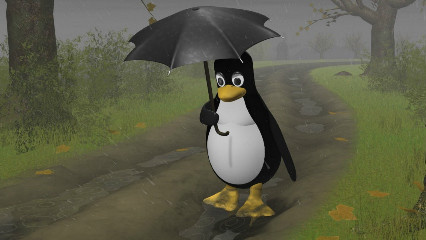
当前课程知识点:微积分1(Calculus I) > Chapter 3 Applications of the Derivative > Maxima and Minima > Maxima and Minima
返回《微积分1(Calculus I)》慕课在线视频课程列表
Today we study the Calculus (I)
The topic is Maxima and Minima
Now look at the figure
can you find the maximum value and minimum value
Maybe some points are our end points
maybe some points are the points between a and b
And then you can ask yourself some questions
does f(x) have a maximum or minimum value
on the given closed interval S between a and b
If it does have a maximum or minimum value
where are they attained
If they exist
what are the maximum and minimum values
How to determine
So now we will tell you some idea
to show the questions
Now look at
let S is our domain of the function f
contain the point c
we will say that
f(c) is our maximum value of function f on the given domain S
Under the condition
if f(c) is larger than or equal to f(x)
for all x in the domain
Pay attention to
it is our maximum value
larger than or equal to
And then f(c) is our minimum value of function f on the given S
if f(c) is less than or equal to f(x)
for all x in the given domain
minimum value
Together
if f(c) is the extreme value of f on the given domain
If it is either the maximum value
or the minimum value
This means both a and c
maximum value and minimum value means extreme value
extreme value
The function we want to maximize or minimize
is our objective function
means objective function
So now we look at the theorem
how to get the Maxima and Minima
Theorem A
Maxima–Minima Existence Theorem
If f is a continuous function
on the given closed interval from a to b
we can get
f will attain both a maximum value
and a minimum value there
means
we can get maximum value and minimum value
So now look at the definition
If f prime c equals 0
we can get
give a new definition for the special point c
c is a stationary point
means stationary point
Look at Definition 2
if prime c fails to exist
this means does not exist
At this time
give c a new name
c is a singular point
means special case
So it is our singular point
The following three kinds of points
end points
stationary points and singular points
are our critical points
If you ask me what are our critical points
Ok
You should consider the three kinds of points
end points
stationary points and singular points
Remember the definitions
Now look at the following Theorem B
Critical Point Theorem
f(c) is an extreme value
at this time
c must be a critical point
Do you remember
what is our critical point
Yes there are three cases
means three kinds of points
So c may be an end point of the domain
f prime c equals 0
means maybe c is a stationary point
Maybe Case 3
f prime c does not exist
means singular point
So we have the theorem B
f(c) is an extreme value
at this time
c must be one kind of critical point
end point
stationary point or singular point
So now look at how to get the maxima and minima
Try to remember
Step 1
find f prime x equals 0
or f prime x does not exist
What
What is our goal
Ok
Try to get the corresponding critical points
from the given domain
We will know the end points
the end points
From f prime x equals 0
we can get the corresponding stationary points
f prime x does not exist
at this time
we can get the singular points
And then evaluate f at the critical points
evaluate the values
The last step
compare
compare the values to find the maxima and minima
Try to remember
So now look at Example 1
Try to find
the critical points of f(x) equals
minus 2 x cube plus 3 x square on the given domain
What are our critical point
Do you remember the definition
Yes there are three kinds of points
end points
so and then
stationary points and singular points
So now look at the solving idea
f prime x equals
minus 2 time 3 equals minus 6 x square
plus 6x equals 0
We can get
if f prime equals 0
get the two solutions
x equals 0 or x equals 1
It is our stationary point
No singular point
And then consider the end point
There are two
one is minus half
the other is 2
So together
the critical points are
minus half and 2
and 0 and 1
We have got it
the critical points
Now look at Example 2
Try to find
maximum and minimum values of the given function
f(x) equals x cube on the given domain
minus 2 to 2
How to get it
Do you remember the four steps
Yes I remember
Step 1
try to get the corresponding f prime x
What is our f prime x
Yes
f is given
x cube
So corresponding
the first derivative equals 3 x square equals 0
f prime x equals 0
There is only one solution
x equals 0
It is our stationary point
Step 2
count the number of critical points
What are our critical points
Yes consider end points
minus 2
2 and the stationary point
Together
there are three points
minus 2
0 and 2
Step 3
evaluate the values of the function
at the different critical points
f(0) together f(0) equals 0
f(2) equals 2 cube means 8
f minus 2 equals minus 2 cube
means minus 8
The last step
do you remember
Yes compare the values
We can find
8 is our maximum value
minus 8 is our minimum value
So together
f maximum value is 8
get it at the point 2
Minimum value is minus 8
we can get it
at the point minus 2
So now the question is ok
We will look at Example 3
Try to find
the maximum and minimum values
of the given expression
Now maybe it is complex
But the domain is the same
the closed domain from minus 2 to 2
the same idea
So now we will give the idea
If you know how to draw the figure
it is ok
But we don't know how to draw the figure
How to do
According to our computation steps
now look at
how to compute
Yes
get the f prime x
We can get f prime x
the first derivative for our function
x 2 over 3
equals 2 over 3 x
2 over 3 minus 1
equals minus 1 over 3
and then minus 1 by 3 bracket
x square minus 1 minus 2 over 3
time u prime
why
Chain Rule Yes
Chain Rule by the derivative
time u prime means double x
How to get f prime equals 0
or doesn't exist
Taking out the common factor
what is our common factor
Pay attention to
x power is 1
This
x power minus 1 over 3
which is smaller
Yes
minus 1 by 3
so taking out
Together this term
corresponding minus 2 over 3
known
this term means the power is 0
Together minus 2 over 3
it is our common factor
It is an equation
We can get another term
And now it is our expression
Write it in this form
Pay attention to this
and this term
become denominator
And then this is our numerator
What get it
Yes critical points
How to get it
From numerator equals 0
we can get our stationary points
Denominator equals 0
we can get some singular points
So we can get singular points
x equals 0
or x equals positive or minus 1
Stationary points
we can get x equals positive
or minus 1 over square root of 2
And then end points
it is very easy
We can find it
positive or minus 2
Together
1 2 3 4 5 6 7
how many critical points
Yes seven points
Do you remember Step 3
Yes evaluate the values
Seven points may be seven values
But you should pay attention to the fact
f(x) is an even function
So we only consider four values
it is ok
Because it is an even function
so f(0) equals 1
f positive or minus
they have the same values
So we only need to compute one value
it is ok
And then f(1) equals 1
f(2) we can get it
So now the last step
compare the values
at different critical points
compare each other
This is our maximum value
This is our minimum value
So we have our final result
f corresponding maximum value
and minimum are got
So now we look at the figure
Compare
yes
corresponding maximum value
get it at the 2 points ok
So
positve 1 over square root of 2
or minus 1 over square root of 2
And then
minimum values are got
What points
Yes
at the end points
may be positive 2
may be minus 2
Why
It is even function
symmetrical
So at the positive 2 or minus 2
we get the minimum value
So try to understand the question
using the property of even function
and symmetrical property
So now we look at the summary
How to get the maximum and minimum value
Step 1
get f prime x
find it equals 0 or does not exist
the corresponding solutions
Step 2
together
consider the critical points
including end points
stationary points
and singular points
Step 3
evaluate the corresponding values
at each of these critical points
Last step
compare the values
and then find the maximum and minimum
Try to use the four steps
So now
using the four steps
We will finish our questions
Remember the smallest of these values
is the minimum value
corresponding
the largest of these values
is our maximum value
Using the four steps
we will solve some questions
Now look at Question 1
Try to find
the maximum and minimum values
of the function f(x)
f(x) equals x 2 over 3
on the given closed interval from minus 1 to 2
How to do
Yes
according to our summary
the first step
try to find f prime x
This question is very easy
f prime is our x-λ form
So the corresponding first derivative
equals 2 over 3 time x
the power is minus 1 over 3
So f prime x equals 0
We can find
f prime 0 does not exist
no stationary point
So f prime 0 does not exist
This means 0 is our critical point
And then
count the number of critical points
How many
0 is our
the corresponding critical point
Consider the end points
so together
0 minus 1 and 2
1 2 3
there are three points
And then
evaluate function values
f at the given point minus 1 equals 1
f(0) equals 0
f(2) equals the third root of 4
Compare
corresponding
which one is the biggest
which one is the smallest
We found 0 is our minimum
and this number is our maximum
In the similar way
we can do the question 2
Try to find
the maximum and minimum values of f(x)
equals minus 2 x cube plus 3 x square
on the given closed interval
Yes using the four steps
Step 1
try to find f prime x
What is our f prime
Yes
minus 2 time 3 x square equals
minus 6 x square plus 6 x
equals 0
f prime equals 0
we can find two points
means there are two solutions
One is x equals 0
the other is x equals 1
The corresponding stationary points
2 points
Count the number of critical points
critical points 0, 1
and then
end points minus half and 2
1, 2 3 4
together four points
Evaluate the corresponding function values
f at the given point minus half
the value is 1
The 0 point the value is 0
f value at the given point 1 is 1
Value at the point 2 is minus 4
Compare the values
We can find
f maximum value is 1
minimum value is minus 4
So try to remember the four steps
The class is over
See you next time
-Course Introduction
--Document
-Introduction to Limits
-Rigorous Study of Limits
--Document:Rigorous Study of Limits
-Limit Theorems
-Limits Involving Trigonometric Functions
--Limits Involving Trigonometric Function
--Document:Limits Involving Trigonometric Function
-Limits at Infinity, Infinite Limits
--Limits at Infinity, Infinite Limits
--Document:Limits at Infinity; Infinite Limits
-Continuity of Functions
--Document:Continuity of Functions
-Chapter Review
--Document: chapter 1 supplement
-Assignments for Chapter 1
--Assignment 1
--Assignment 2
-Discussion Topics of Chapter 1
--Discussion Topics of Chapter 1
-Homework and Answer of Chapter 1
-Homework 1
--Homework 1
-Two Problems with One Theme
-The Derivative
-Rules for Finding Derivatives
--Rules for Finding Derivatives
--Document: Rules for Finding Derivatives
--Supplement: Rulesfor Finding Derivatives
-Derivate of Trigonometric Functions
--Supplement: Derivatives of Trigonometric Functions
-The Chain Rule
-Higher-Order Derivative
--Document: Higher-Order Derivatives
--Supplement: Higher-Order Derivatives
-Implicit Differentiation
--Document: Implicit Differentiation
--Supplement: Implicit Differentiation
-Related Rates
-Differentials and Approximations
--Supplement: Differentials and Approximations
-Chapter Review
-Assignments for Chapter 2
--Assignment 1
--Assignment 2
-Discussion Topics of Chapter 2
--Discussion Topics of Chapter 2
-Homework and Answer of Chapter 2
-Homework 2
--Homework 2
-Maxima and Minima
--Supplement:Maxima and Minima
-Monotonicity and Concavity
--Document: Monotonicity and Concavity
--Supplement: Monotonicity and Concavity
-Local Extrema and Extrema on Open Intervals
--Local Extrema and Extrema on Open Intervals
--Document: Local Extrema and Extrema on Open Intervals
--Supplement: Local Extrema and Extrema on Open Intervals
-Practical Problems
--Document: Practical Problems
--Supplement: Practical Problems
-Graphing Functions Using Calculus
-The Mean Value Theorem for Derivatives
--The Mean Value Theorem for Derivatives
--Document: The Mean Value Therorem for Derivatives
--Supplement:The Mean Value Therorem for Derivatives
-Solving Equations Numerically
-Anti-derivatives
-Introduction to Differential Equations
-Chapter Review
--Supplement: Supplement for Chapter 3
-Assignments for Chapter 3
--Assignment 1
--Assignment 2
-Discussion Topics of Chapter 3
--Discussion Topics of Chapter 3
-Homework and Answer of Chapter 3
-Test 1
--Test 1
-Introduction to Area
--Supplement: Introduction to Area
-The Definite Integral
--Document: The Definite Integral
--Supplement: The Definite Integral
-The First Fundamental Theorem of Calculus
--The First Fundamental Theorem of Calculus
--Document: The First Fundamental Theorem of Calculus
--Supplement: The First Fundamental Theorem of Calculus
-The Second Fundamental Theorem of Calculus and the Method of Substitution
--The Second Fundamental Theorem of Calculus and the Method of Substitution
--Document: The Second Fundamental Theorem of Calculus and the Method of Substitution
--Supplement: The Second Fundamental Theorem of Calculus and the Method of Substitution
-The Mean Value Theorem for Integrals and the Use of Symmetry
--Supplement: The Mean Value Theorem for Integrals and the Use of Symmetry
-Numerical Integration
-Chapter Review
-Assignments for Chapter 4
--Assignment 1
--Assignment 2
-Discussion Topics of Chapter 4
--Discussion Topics of Chapter 4
-Homework and Answer of Chapter 4
-Homework 4
--Homework 4
-The Area of a plane region
--Document: The Area of a Plane Region
-Volumes of Solids: Slabs, Disks
--Volumes of Solids: Slabs, Disks
--Document: Volumes of Solids Disk Method
-Volumes of Solids of Revolution: Shells
--Volumes of Solids of Revolution: Shells
--Document: Volumes of Solids Shell Method
-Length of a plane curve
--Document: Length of a Plane Curve
-Work and Fluid Force
--此章节为自学模块
-Moments and Center of Mass
--此章节为自学模块
-Probability and Random Variables
--此章节为自学模块
-Chapter Review
--此章节为自学模块
-Assignments for Chapter 5
--Assignment 1
--Assignment 2
-Discussion Topics of Chapter 5
--Discussion Topics of Chapter 5
-Homework and Answer of Chapter 5
-Homework 5
--Homework 5
-The Natural Logarithm Function
--此章节为自学模块
-Inverse Functions
--此章节为自学模块
-The Natural Exponential Function
--此章节为自学模块
-General Exponential and Logarithm Function
--此章节为自学模块
-Exponential Growth and Decay
--此章节为自学模块
-First-Order Linear Differential Equations
--此章节为自学模块
-Approximations for Differential Equations
--此章节为自学模块
-The Inverse Trigonometric Functions and Their Derivatives
--此章节为自学模块
-The Hyperbolic Functions and Their Derivatives
--此章节为自学模块
-Chapter Review
--此章节为自学模块
-Basic Integration Rules
--Document: Basic Integration Rules
-Integration by parts
--Document: Integration by Parts
-Some Trigonometric Integrals
--Some Trigonometric Integrals
--Document: Some Trigonometric Integrals
-Rationalizing Substitutions
--Document: Rationalizing Substitutions
-Integration of Rational Functions Using Partial Fraction
--Integration of Rational Functions Using Partial Fraction
--Document: Integration of Rational Functions Using Partial Fractions
-Strategies for Integration
--此章节为自学模块
-Chapter Review
--此章节为自学模块
-Assignments for Chapter 7
--Assignment 1
--Assignment 2
-Discussion Topics of Chapter 7
--Discussion Topics of Chapter 7
-Homework and Answer of Chapter 7
-Homework 7
--Homework 7
-Indeterminate Forms of Type
--此章节为自学模块
-Other Indeterminate Forms
--此章节为自学模块
-Improper Integrals: Infinite Limits of Integration
--Improper Integrals: Infinite Limits of Integration
--"Improper Integrals Infinite Limits of Integration" Document
-Improper Integrals: Infinite Integrands
--Improper Integrals: Infinite Integrands
--"Improper Integrals Infinite Integrands" Document
-Chapter Review
--此章节为自学模块
-Assignments for Chapter 8
--Assignment 1
--Assignment 2
-Discussion Topics of Chapter 8
--Discussion Topics of Chapter 8
-Homework and Answer of Chapter 8
-Test 2
--Test 2






